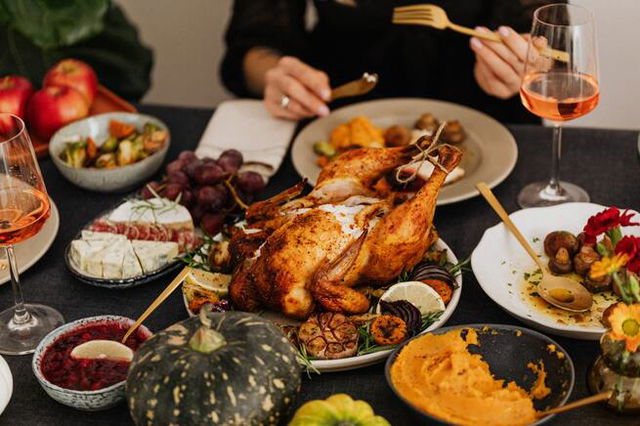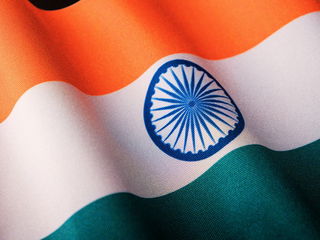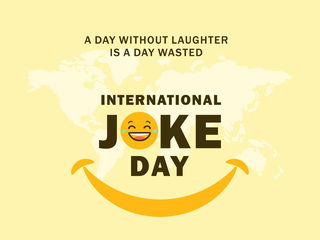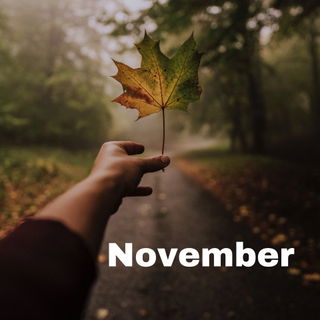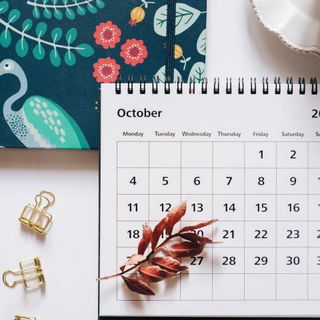- Calendar
- Calendar 2025
- November
- Holiday Thanksgiving Day
Thanksgiving Day
Holiday
Thanksgiving is celebrated on the fourth Thursday of every November and in 2023, Thanksgiving falls on November 23rd.
Famous for being a day for eating an abundance of turkey and pumpkin pie, it is a federal holiday, so most schools and businesses are closed.
The day after Thanksgiving Day is Black Friday which is also a holiday in more than 20 states, allowing people to benefit from a long weekend. This is also known as Thanksgiving break.
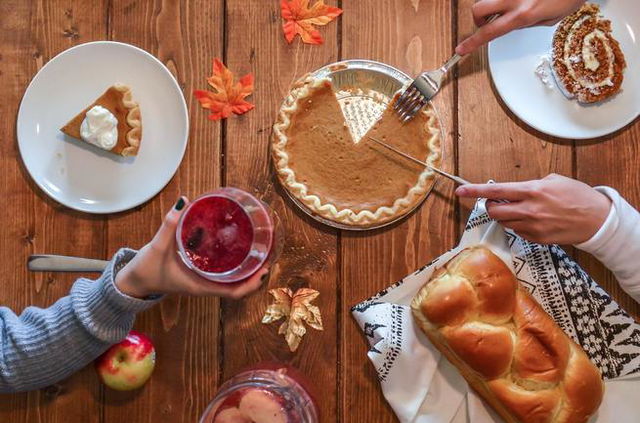
When is Thanksgiving going to be next?
- Thanksgiving 2023 - November 23
- Thanksgiving 2024 - November 28
- Thanksgiving 2025 - November 27
- Thanksgiving 2026 - November 26
- Thanksgiving 2027 - November 25
History of Thanksgiving
To understand its origin and why we celebrate Thanksgiving today, it is important to understand its roots by delving into the history behind Thanksgiving. Our timeline outlines the background of the date.
Pilgrims Reach the New World in 1621
Religious separatists left Plymouth, England, bound for the New World on the Mayflower ship in September 1620. They hoped to find prosperity, a new way of life, and the opportunity to practice their faith in freedom, the majority having left the Church of England.
Over 3 months later, they crossed Massachusetts Bay and worked on setting up a village at Plymouth. Their first winter in Plymouth was particularly difficult. Most of the settlers lived aboard the ship, and disease and scurvy abounded. Only half of them managed to survive the winter.
They moved ashore in March. An Indian from the Abenaki tribe greeted them in English. He later returned with a native Indian, a Pawtuxet named Squanto. He had been sold into slavery but had managed to escape to London and get back to his homeland.
He taught the Pilgrims, as they came to be known about 100 years later, how to live off this new land. He showed them corn cultivation and helped them build bonds with the local Wampanoag tribe.
A Reason for Celebration
In November of 1621, the Pilgrims gathered their first harvest of corn. Governor William Bradford organized a celebratory feast with guests from the Wampanoag tribe. This harvest celebration lasted 3 days.
The food likely included fowl, which the Pilgrims had caught, and deer that the Wampanoag had brought with them as a gift.
Their feast menu could have included fish, as well as native fruits and vegetables, such as garlic, cranberries, walnuts, and chestnuts. However, they had no potatoes and they would not have pumpkin pie, as they had no sugar or oven.
There was a formal march, and both the Pilgrims and native Indians put on a show of their weaponry abilities. As well as feasting and military exercises, there were games.
This day of thanksgiving to God, combined with harvest celebrations, came to be celebrated annually in the New England area by the late 1600s, but on various days.
First Nationwide Holiday in 1789
George Washington, before his presidency, had often proclaimed days of thanks for victories during the Revolutionary War. Now, after the success of the Revolution, he desired his country to be governed by laws that were faithful to the Constitution.
In recognition of this, in 1789, he issued a proclamation that Thursday 26, the last Thursday in November, should be Thanksgiving Day, marking the first national observance of the day. However, the holiday was observed on different days in each state. Subsequent presidents did not maintain the observance.
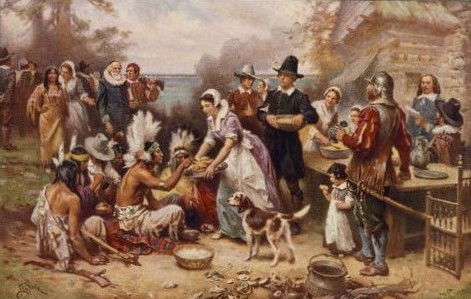
A Holiday Once Again
An Eager Advocate
Sarah Josepha Hale was the editor of Godey's Lady's Book, an American women's magazine published in Philadelphia from 1830 to 1878.
Her editorials reached the largest number of people of any periodical at that time. She embarked on a vigorous 17-year campaign to celebrate Thanksgiving Day as a national holiday, writing hundreds of letters to prominent members of society and officials. She expressed her aim in one of her articles:
“Then in every quarter of the globe our nationality would be recognized. . . every American. . . would thrill his soul with the purest feelings of patriotism and the deepest emotions of gratitude for his religious enjoyments.”
Success at Last
Despite opposition from several leaders, she was granted her desire when President Abraham Lincoln issued his Thanksgiving Proclamation on October 3, 1863, designating “the last Thursday of November” as a day of Thanksgiving.
His proclamation, printed in several newspapers, stated that
“in the midst of a civil war of unequal magnitude and severity, the American people should take some time for gratitude.”
In 1939, President Roosevelt changed the day from the last Thursday to the second-to-last Thursday in November. There were 5 Thursdays in November, and he thought this would allow for a more extended Christmas shopping period, boosting the recovering economy. However, many did not like this change - some states observed it; others ignored it.
Finally, on December 21, 1941, the President signed a resolution to declare the fourth Thursday of November Thanksgiving Day.
The Evolution of Thanksgiving Through History
1620:
- Pilgrims leave Plymouth, England, on the Mayflower in September.
- They reach the New World after over 3 months at sea.
- Set up a village at Plymouth, Massachusetts, facing a harsh winter.
1621:
- Pilgrims move ashore in March.
- Native Indian Squanto helps the Pilgrims adapt to the land and build bonds with the local Wampanoag tribe.
- In November, Pilgrims gather their first harvest of corn.
- Governor William Bradford organized a 3-day feast with Wampanoag guests, marking the first Thanksgiving celebration.
- The feast likely includes fowl, deer, fish, native fruits, and vegetables.
Late 1600s:
- Thanksgiving celebrations become an annual tradition in the New England area but on various days.
1789:
- George Washington issued a proclamation designating the last Thursday in November as Thanksgiving Day, marking the first nationwide observance.
- However, the holiday is observed on different days in each state, and subsequent presidents do not maintain the observation.
1939:
- President Franklin D. Roosevelt changed the date of Thanksgiving from the last Thursday to the second-to-last Thursday in November to extend the Christmas shopping period.
1941:
- On December 21, President Roosevelt signed a resolution to declare the fourth Thursday of November as Thanksgiving Day, which is the date we celebrate today.
Controversies and Assumptions
Some doubt whether Plymouth 1621 was actually the first Thanksgiving celebration. The Pilgrims may have adopted the idea of harvest celebrations from Holland, where they first fled.
Other special harvest day celebrations and Thank Days, for special occasions, took place in early American colonies.
For example, in 1565, in St. Augustine, Florida, the Spanish explorer Pedro Menéndez de Avilé held a dinner and invited the local Timucua tribe.
British settlers held a similar celebration in 1619 in the Virginia Colony. Native Americans had their own harvest celebrations in the fall.
Thanksgiving and harvest celebrations can be found in ancient Egyptian, Greek, and Roman cultures.
Some Native Americans take exception to how the history of the Pilgrims and the Wampanoag people is portrayed.
It belies the fact that millions of people died because of the conflict between native tribes and European settlers. Since 1970, every Thanksgiving Day, protesters gather on the top of Cole's Hill, overlooking Plymouth Rock (where the Pilgrims are said to have landed).
They observe the “National Day of Mourning.” Similar observances are held around the country.
Thanksgiving Traditions Today
Traditionally, Thanksgiving in the USA is a day when families gather together to celebrate, give thanks for what they are grateful for, and eat a traditional Thanksgiving dinner.
Happy Thanksgiving is a common expression used around the holiday and many simply refer to Thanksgiving as Turkey Day, since the Thanksgiving dinner has become such a significant ritual.
Thanksgiving isn't just celebrated in the United States. Other countries that follow celebrations also include Canada, Grenada, Saint Lucia, and Liberia. In Spanish, Thanksgiving Day is known as Día de Acción de Gracias, which literally translates to "day of giving thanks".
It marks the opening of the Christmas season and shopping period. It is also a day for football games, namely the NFL, and other sporting events, both amateur and professional.
Some people, wanting to give back, see the time as an occasion to volunteer at soup kitchens, food banks, etc.
Parades take place, the most famous being the Macy's Thanksgiving Day Parade in New York, with millions attending and watching on television. In 2021, Macy's celebrates its 95th parade.
Favorite Thanksgiving Meals
- Turkey: This should come as no surprise to anyone, but the top dish, and almost everyone's favorite is Turkey. According to the National Turkey Federation, 88% of people eat Turkey at Thanksgiving, which equates to about 46 million turkeys across the country!
- Mashed Potatoes: No Thanksgiving Dinner would be complete without this side, the perfect accompanying dish to go alongside the turkey. Several studies have shown that this is one of the most popular dishes.
- Stuffing: There are many recipes for stuffing, and the truth is that Thanksgiving Dinner would be incomplete without some version of this American classic. At least, in surveys that's what 66% of people think, placing stuffing as the third most important part of the meal.
Other popular Thanksgiving meals include bread rolls, ham, scalloped potatoes, sweet potatoes, gravy, green beans, mac and cheese, cranberry sauce, pumpkin pies, etc.
Thanksgiving Facts To Be Thankful For
- The original Thanksgiving dates in uncertain because it wasn't recorded by the Pilgrims.
- The tradition of the President of the United States pardoning a turkey and sparing it from Thanksgiving dinner began in the 20th century, popularized by President George HW Bush in 1989.
- Canada also celebrates Thanksgiving, but it falls on the second Monday in October and has different historical roots.
- Thanksgiving Day football games have been a tradition since the late 19th century, with the first NFL game on Thanksgiving played in 1920.
- Some Native American groups and their supporters observe Thanksgiving as a National Day of Mourning to remember the suffering and displacement of indigenous peoples during colonization.
Take a look at these articles next:
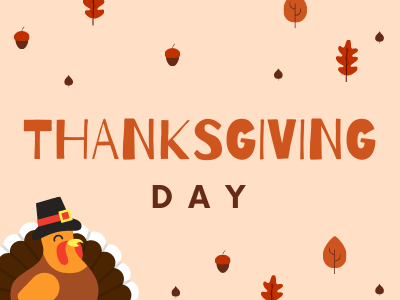
Other Celebrations
-
Feb 13 Thu
-
Apr 29 Tue
-
May 01 Thu
-
Jul 26 Sat
-
Sep 21 Sun
-
Sep 21 Sun

Thanksgiving Day 2025
Date: Thursday, 26 November 2026
Date: Thursday, 25 November 2027
Date: Thursday, 23 November 2028
